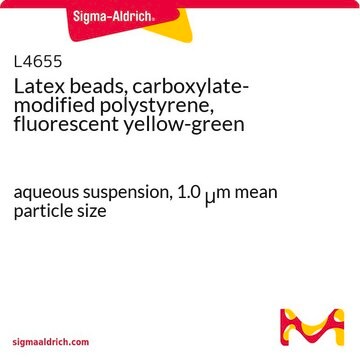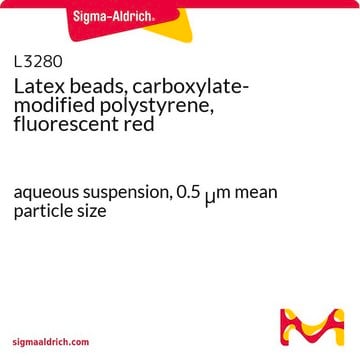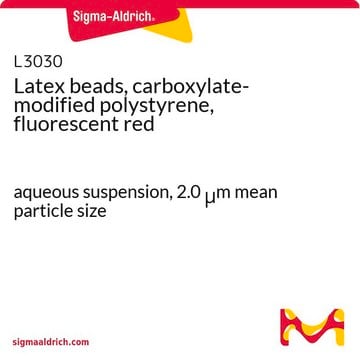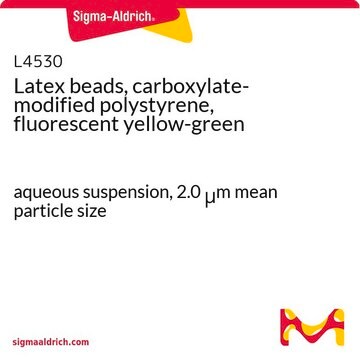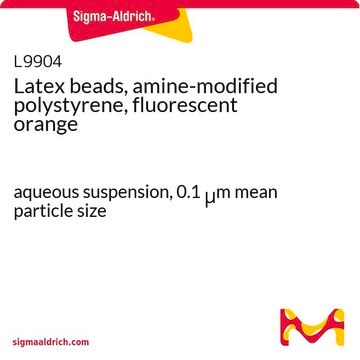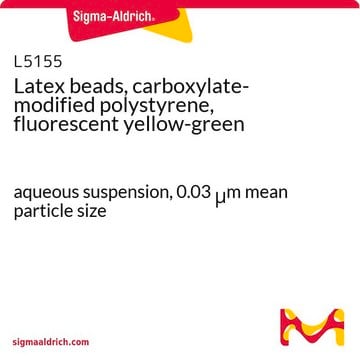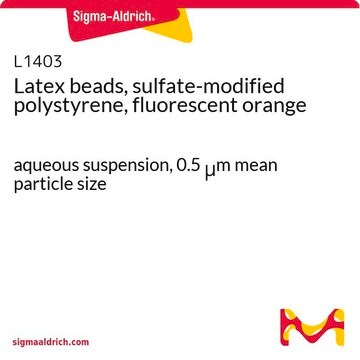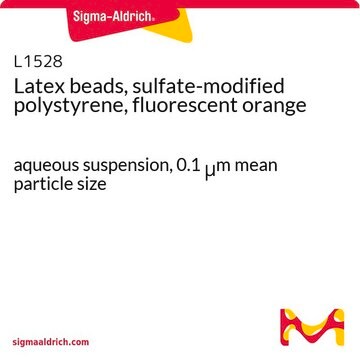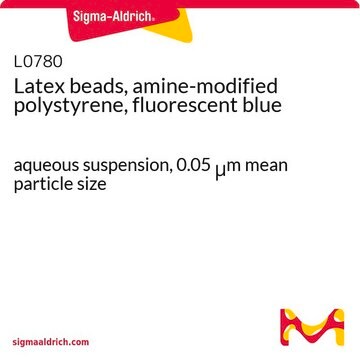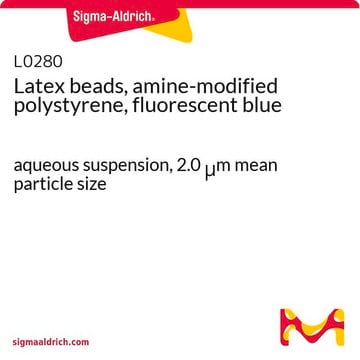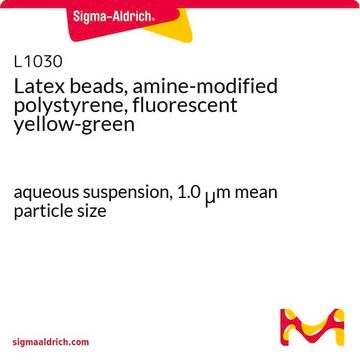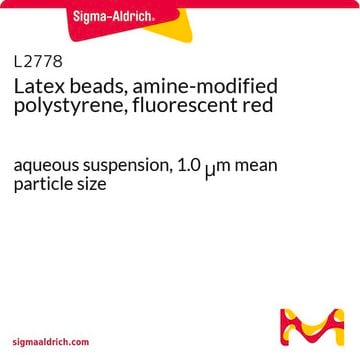Polystyrene beads are available in several formats - unmodified, carboxyl-modified, or amine-modified - as well as various colors and numberous sizes. This particular product is an amine-modified bead containing a blue fluorescent dye. See the image below to review the basic structure. This is a surface modification that allows for the attachment of certain ligands such as polypeptides via the carboxyl-terminus. The dyes are embedded in the polystyrene bead during the manufacturing process. These are not bound to the surface of the bead.
L5530
Latex beads, carboxylate-modified polystyrene, fluorescent orange
aqueous suspension, 0.5 μm mean particle size
Select a Size
$60.96
List Price$68.50Save 11%In StockDetails
Select a Size
About This Item
$60.96
List Price$68.50Save 11%In StockDetails
Recommended Products
form
aqueous suspension
Quality Level
composition
Solids, 2.5%
mean particle size
0.5 μm
fluorescence
λex ~520 nm; λem ~540 nm
Looking for similar products? Visit Product Comparison Guide
Application
Storage Class
10 - Combustible liquids
wgk_germany
WGK 3
flash_point_f
Not applicable
flash_point_c
Not applicable
Choose from one of the most recent versions:
Already Own This Product?
Find documentation for the products that you have recently purchased in the Document Library.
Customers Also Viewed
-
Does the polystyrene bead have amine groups attached to the bead surface? What is the purpose of this modification? How is the dye bound to these beads.
1 answer-
Helpful?
-
-
Can this product be used in animal rodent model for in vivo imaging using Perkin Elmer IVIS Spectrum platform???
1 answer-
Product L5530, Latex beads, carboxylate-modified polystyrene, is not tested for fluorescent orange in animal rodent model for in vivo imaging using Perkin Elmer IVIS Spectrum platform. It is encouraged that the end-user determines the suitability of this application.
Please note that the fluorescence is : λex ~520 nm; λem ~540 nm
Helpful?
-
-
What does "λex ~520 nm" mean? In particular, I do not understand the meaning of "~". Is it possible to excite with excitation wavelengths from 430 to 510 nm? 「λex ~520 nm」とはどういう意味ですか? 特に「~」の意味がわかりません。 430~510nmの励起波長で励起できるのですか?
1 answer-
Product L5530 is a fluorescent product having λex ~520 nm; λem ~540 nm, where λex ~520 nm means excitation at 520nm and λem ~540 nm means emission at 540nm. The spectra is quite tight and hence it will be important to set the filters accordingly. "~" means "about/around" in this aspect, where if λex is 520 nm, +/- 5 to 10 nm difference in the wavelength should be alright.
Generally, a range of 430-510nm ex/em is not suitable for green fluorochomes. The 430 nm wavelength is too early for excitation and is not recommended for this product.Helpful?
-
Active Filters
Our team of scientists has experience in all areas of research including Life Science, Material Science, Chemical Synthesis, Chromatography, Analytical and many others.
Contact Technical Service